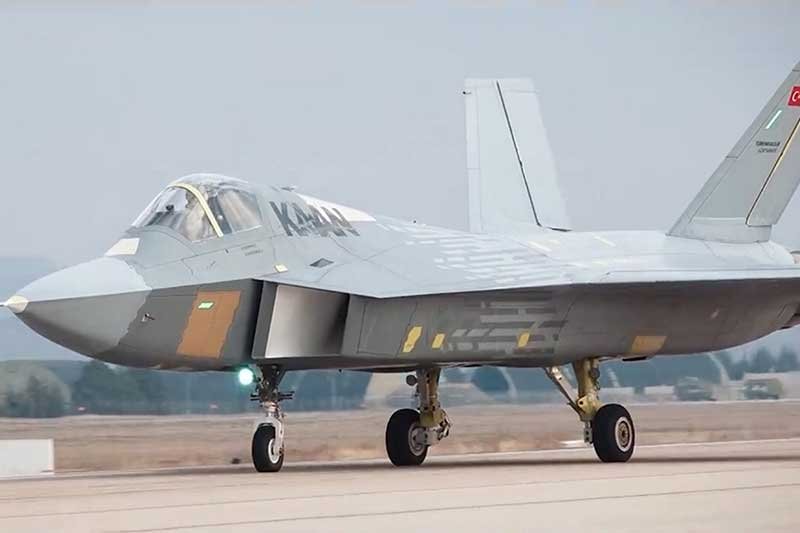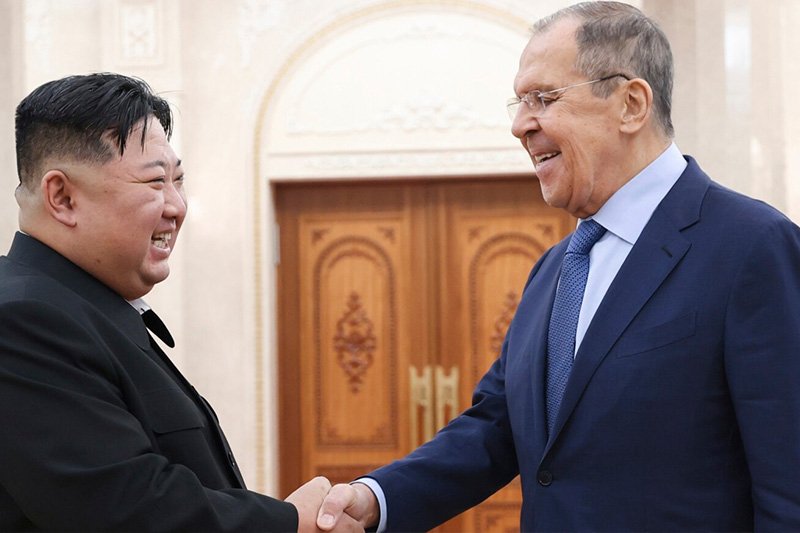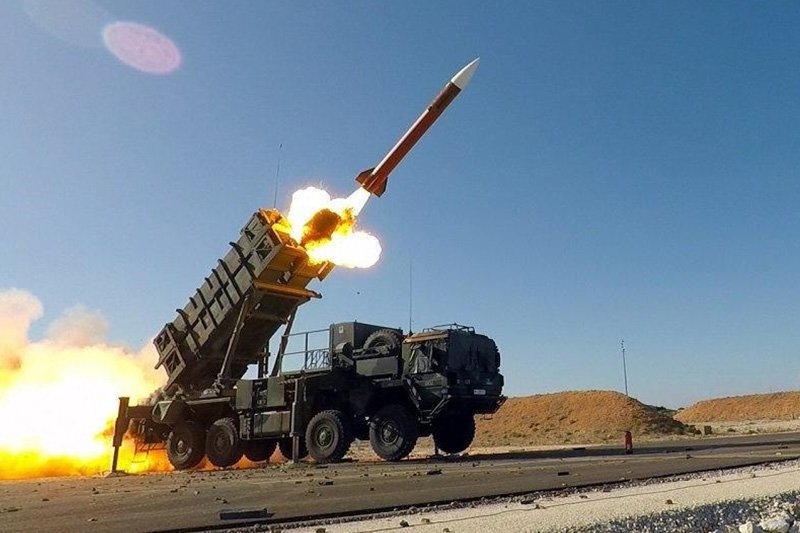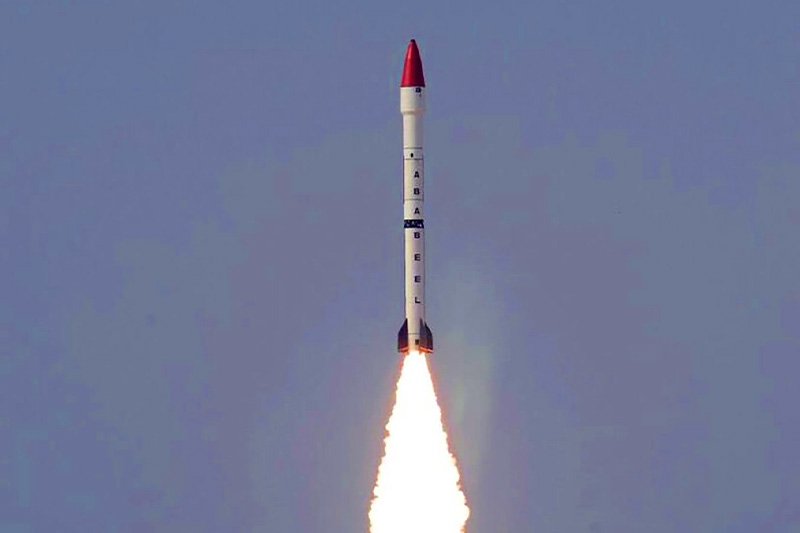US Sanctions on Pakistan’s Missile Program
The United States recently imposed sanctions on Pakistan’s missile program, targeting entities involved in the development of Pakistan’s advanced missile systems like Shaheen-3 and Ababeel. These sanctions primarily focus on Chinese and Pakistani organizations accused of facilitating ballistic missile proliferation.
Shaheen-3 and Ababeel Missiles
Shaheen-3 and Ababeel are among the most capable missiles in Pakistan’s arsenal. The Shaheen-3 has a range of 2,740 km, while the Ababeel can carry Multiple Independently targetable Reentry Vehicles (MIRVs) over a distance of 2,200 km. These missile systems are designed to overcome missile defense systems, making them vital for Pakistan’s strategic deterrence, particularly against India.
Ababeel: Introduced in 2017, Ababeel can carry multiple warheads to hit different targets. It was tested again in 2023 and showcased at the Pakistan Day Parade in 2024.
Shaheen-3: Designed to reach India’s farthest regions like the Andaman and Nicobar Islands, the missile ensures that India has no untargetable zones. It is considered a counter-strike weapon in case of an Indian first-strike scenario.
US Sanctions and Accusations
The US imposed sanctions under the Arms Export Control Act (AECA) and the Export Control Reform Act (ECRA) on multiple Chinese companies and a Pakistani entity. These include:
Beijing Research Institute of Automation Pharmaceutical Building Industry (RIAMB): Accused of developing and testing technology for Shaheen-3 and Ababeel.
Pakistani National Development Complex (NDC): Allegedly worked with RIAMB to procure rocket motor testing equipment for larger missile systems.
The US also targeted Chinese firms Hubei Huachangda Intelligent Equipment and Universal Enterprise. The sanctions, according to the US, aim to curb ballistic missile proliferation activities involving Pakistan and China.
Pakistan’s Response to the US Sanctions
Pakistan dismissed the US move as politically motivated and biased. According to the Pakistani Foreign Ministry, these sanctions reflect double standards in global non-proliferation efforts. Islamabad argues that countries like India, despite receiving foreign technology support, are not subjected to similar sanctions.
Impact of US Sanctions on Pakistan’s Missile Program
Despite the sanctions, experts believe that Pakistan’s missile program is self-sufficient and relies primarily on indigenous technology. Historically, Pakistan has worked with China to develop missile capabilities, circumventing Western restrictions.
Key Points
Pakistan’s National Development Complex (NDC) is minimally dependent on Western technologies, making the sanctions unlikely to impact its progress significantly.
The Shaheen-3 and Ababeel missile systems are already operational, suggesting that development work has progressed to a stage where foreign dependencies are minimal.
The Strategic Importance of Ababil and Shaheen-3
Both Ababeel and Shaheen-3 are critical to Pakistan’s deterrence against India. India’s ballistic missile defense systems and Agni-5 MRV capabilities necessitate Pakistan’s investment in counter-measures like MIRVs.
MIRV Capability: Ababil’s MIRVs can target multiple strategic sites, enhancing survivability and strike precision.
Shaheen-3’s Range: With its extended range, Shaheen-3 ensures Pakistan can hit high-value targets across India, including nuclear submarine bases.
Pakistan’s Strategic Advancements
Pakistan’s advancements in missile technology, particularly with the Ababeel and Shaheen-3, position the country to develop more capable systems in the future. These platforms could potentially serve as the foundation for larger and more advanced missile systems, such as longer-range intercontinental ballistic missiles (ICBMs). Additionally, Pakistan’s expanding space program may play a critical role in advancing space-launch vehicles, which could further enhance its strategic defense capabilities and strengthen its deterrence in the region, especially in response to India’s growing missile arsenal.
Also read this: Anduril Unveils Cruise Missile Weapon, Voice-Controlled Drones
India’s Missile Development and Regional Balance
While the US scrutinizes Pakistan’s missile program, India’s ballistic missile advancements, such as the Agni-5, have gone relatively unchallenged. India’s cooperation with Russia on missiles like BrahMos, which now has an extended range of 800 km, raises concerns about an imbalance in the region’s arms race.
US sanctions on Pakistan’s missile program should be viewed in the broader context of regional strategic competition and the evolving dynamics between China, India, and the US. The US sees India as a crucial partner in the Quad alliance, aimed at countering China’s influence in South Asia. Consequently, the focus on Pakistan’s missile program, while India’s advancements are overlooked, reflects this larger geopolitical alignment.
Future Implications
The sanctions, though symbolic, are unlikely to halt Pakistan’s missile development. As Pakistan continues to enhance its missile capabilities, the regional security architecture in South Asia will remain a delicate balance of power, shaped by missile advancements on both sides of the India-Pakistan divide.
Keep connected with us at Facebook, Twitter, YouTube, Instagram & TikTok for latest defense happening around the globe.













3 thoughts on “US Sanctions on Pakistan’s Missile Program”